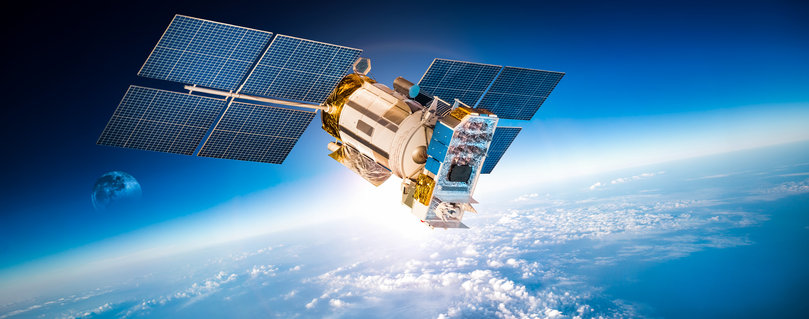Systems engineering – sustainable technology serving society

Systems engineering is an enabler in the field of digitalisation and sustainability that aims to develop technical systems into a coherent whole. These include systems for smart cities and autonomous vehicles, digitalisation in agriculture, automatic image enhancement, mapping of the Earth’s surface, satellite-based weather forecasts and climate models for our planet.
Two researchers in systems engineering are Professors Mats Pettersson and Mattias Dahl. Their research is conducted and applied exclusively in close collaboration with industry and wider society.
“Our partners take measurements using radar and optical sensors from vehicles, satellites, drones and aircraft. We receive this data and research new methods to generate images from the raw material, and to extract specific information from it,” says Mats Pettersson.
Research in systems engineering sits at the intersection between sensors, self-learning systems, machine learning and artificial intelligence (AI).
“Almost all technological advances include the processing of information from sensors for humans. Systems engineering plays a crucial role for technical systems and human beings in many different ways.”
“With a stream of information, you want to get what’s relevant in the context.”
“Faster computers and the ability to collect more high-resolution, high-precision data are key to the refined predictions that we researchers can make effectively these days with the support of AI,” says Mattias Dahl.
With increased computing power and bandwidth, many new applications are being created across a broad spectrum, from automotive technology and industry to healthcare and energy technology.
“It would be perfectly possible, for example, to measure the heart rate of residents in a building using radar rather than using cameras for surveillance. New radar sensors could thereby help us to protect human privacy, which is also important in our research and education,” says Mats Pettersson.
Weather forecasts using satellite imagery is another big developing area. Mats Pettersson also has a long history of working on enabling comparative studies of Arctic ice cover.
More efficient transport by road, rail and sea are major projects in which researchers in systems engineering have been involved. There are considerable challenges in achieving more efficient transport in smart ports and smart cities, many of which require a systems engineering approach. It is the applied interdisciplinary nature of the subject that contributes to our understanding of how a collection of components in a technical system interact to become a functioning whole.
“As an example, we were tasked with following vehicles over a twenty-four-hour period in a large parking lot at a Swedish port. Our results enabled them to reorganise the area and use it more efficiently, instead of expanding it,” says Mattias Dahl.
Tracking vehicle movement on the Swedish road network is another project the researchers are working on. BTH has been involved in developing a method for using satellite imagery across large areas in order to calculate how to filter out vehicles of a certain size and see average speed, length and more.
“Research continues, but now public authorities will also be able to use our models and algorithms. We are also collaborating to make train traffic more efficient and minimise delays when disruptions occur on the rail network. This is very important work so that we can increase the capacity of the existing rail system in the future,” says Mattias Dahl.
With higher bandwidth in a new frequency range, the THz band via 5G and 6G, is it possible to detect more detail and other materials.
“In the optical infrared frequency band you can see in the dark and with X-rays you can see into materials. Radar systems at terahertz frequencies also have these properties but the band is relatively unexplored, we only know part of what is possible to see. The hope is to detect properties that are important for manufacturing industries, such as surface roughness,” says Mats Pettersson.
As transmitters and receivers are built for 5G and 6G, interest will increase among other actors beyond the telecoms industry. Research and development in signal processing are very much focused on taking advantage of these increased opportunities and investigating what can be done with them.
“There are lots of new satellite systems around our planet and it is interesting to be part of finding out what they can do and how they can be utilised in different applications,” says Mats Pettersson.
5 October 2023